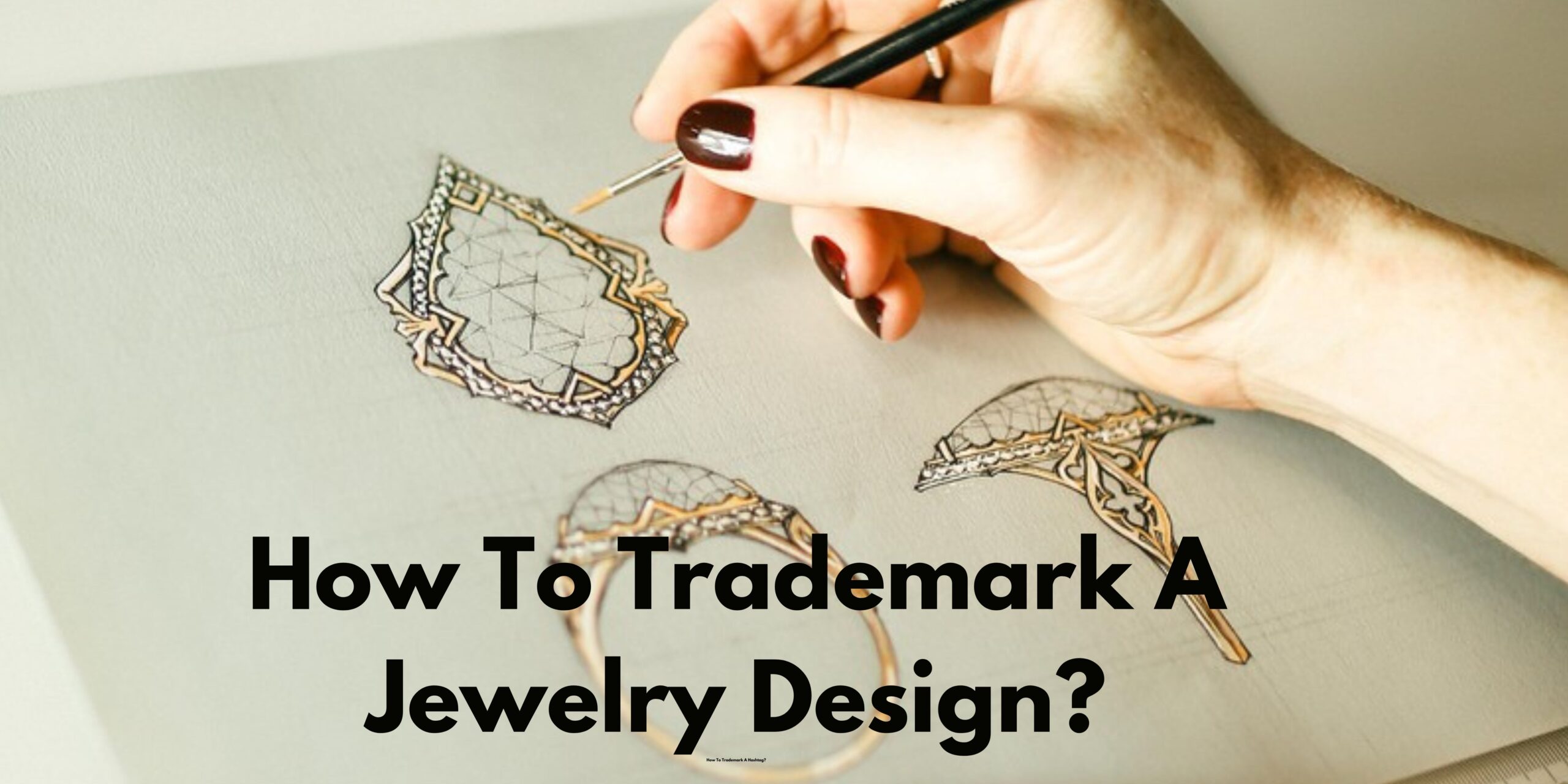How To Trademark A Jewelry Design?

Table of Contents
In the competitive world of jewelry design, protecting your unique creations is essential to maintaining your brand’s identity and market position. Trademarking your jewelry design is a crucial step to ensure that your designs remain exclusively yours and to prevent others from copying or imitating your work.
Here’s to learning how to trademark a jewelry design.
Why Trademark Your Jewelry Design?
Trademarking your jewelry design grants you the exclusive right to use it in connection with your products or services. This legal protection helps prevent others from using a similar design that could cause confusion among your customers. For instance, if you create a unique ring design, trademarking it ensures that no other jeweler can legally use a similar design, safeguarding your brand identity.
By trademarking your jewelry design, you ensure that you have exclusive rights to use it in commerce. This exclusivity is vital in a competitive market where brand differentiation is key. For example, the iconic designs of Tiffany & Co. are trademarked, ensuring that no other company can use similar designs, which helps maintain a strong and unique brand identity.
A registered trademark adds significant value to your brand. It is a tangible asset that enhances your overall business worth. This can be particularly important if you plan to license your designs, sell your business, or seek investment. A trademarked jewelry design adds credibility and can attract potential investors or partners.
Trademarking your jewelry design acts as a deterrent to others who might consider using a similar design. When other businesses see that your design is trademarked, they are less likely to use a similar design, knowing it could lead to legal repercussions. This helps protect your brand from infringement and maintains its uniqueness.
Registering a trademark for your jewelry design demonstrates professionalism and a serious commitment to your brand. It shows that you are dedicated to protecting your creative work, which can enhance your reputation and build trust with your customers, partners, and investors.
Rebranding can be a costly and time-consuming process. By trademarking your jewelry design early on, you can avoid the potential expenses associated with rebranding if another business claims your design or a similar one. This foresight can save you significant time and money in the long run.
If you plan to expand your business, having a trademark provides legal protection in other areas as well. Whether you’re launching new product lines, entering new markets, or creating a franchise, a trademark ensures your jewelry design is protected across various platforms and products.
Case Studies of Successful Trademarked Jewelry Designs
Tiffany & Co.
Tiffany & Co. has built a powerful brand around its distinctive blue color and signature ring setting. Trademarking these elements has allowed Tiffany & Co. to protect its brand from imitators and ensure that their products are easily recognizable. The Tiffany Blue color is so strongly associated with the brand that it evokes a sense of luxury and quality, reinforcing customer loyalty and brand prestige.
Cartier
The Cartier Love bracelet is one of the brand’s most iconic pieces of jewelry. Trademarking the design has helped Cartier protect its unique aesthetic and functional elements, preventing other jewelers from producing similar pieces. This protection enhances the bracelet’s exclusivity and desirability, maintaining its status as a luxury item and a symbol of enduring love.
Pandora
Pandora’s charm bracelets have become a global phenomenon, allowing customers to personalize their jewelry with a variety of charms. By trademarking the name, logo, and specific designs, Pandora ensures that its brand remains distinctive and that consumers associate its products with authenticity and quality. This trademark protection supports Pandora’s extensive marketing efforts and international expansion.
David Yurman
The Cable design is a signature element of David Yurman’s jewelry collections. Trademarking this design helps the brand protect its unique aesthetic and ensures that consumers can identify genuine David Yurman pieces. This protection strengthens the brand’s identity and helps prevent market dilution caused by counterfeit or imitation products.
Alex and Ani
Alex and Ani’s expandable wire bangles are a hallmark of the brand’s product line. Trademarking these designs allows the company to protect its innovative concept and prevent other jewelers from copying their distinctive style. This legal protection supports Alex and Ani’s brand identity and marketing efforts, helping to maintain its position in the fashion jewelry market.
Swarovski
Swarovski is renowned for its high-quality crystals and intricate designs. Trademarking its name, logo, and proprietary techniques ensures that the brand remains synonymous with excellence and craftsmanship. This protection helps prevent counterfeit products from entering the market and damaging Swarovski’s reputation.
Van Cleef & Arpels
The Alhambra design is one of Van Cleef & Arpels’ most recognizable and beloved collections. Trademarking this design helps the brand protect its intellectual property and maintain the exclusivity of its products. The trademark also ensures that consumers can easily identify and trust the authenticity of Van Cleef & Arpels jewelry.
How to Trademark a Jewelry Design
Trademarking a jewelry design involves several steps. Each step is crucial to ensure that your application is successful and that your design is adequately protected.
Step 1: Decide How to File
Before starting the trademarking process, decide how you want to file your application. You have three main options:
- Direct Filing with USPTO
- File directly with the United States Patent and Trademark Office (USPTO). This option is the most cost-effective but requires you to handle all aspects of the application yourself.
- Online Legal Services
- Use online legal services that specialize in trademark registrations. These websites can simplify the process and ensure that your application is correctly filed.
- Hiring a Trademark Attorney
- Hire a trademark attorney to handle the process for you. This option is the most expensive but provides expert guidance and increases the likelihood of a successful application.
Step 2: Review the Current Fee Schedule
The USPTO updates its fee schedule periodically. Before submitting your application, review the current fees to understand the costs involved. Being aware of the fees upfront helps you budget for the trademarking process and avoid surprises.
Step 3: Conduct a Thorough Search
Conduct a search in the USPTO’s Trademark Electronic Search System (TESS) to ensure that no similar trademarks are already registered. This step is crucial to avoid potential legal issues and application rejection.
Tips for a Comprehensive Search:
- Search Variations: Look for different variations of your jewelry design, including common elements and similar visual styles.
- Related Classes: Check for similar designs in related classes of goods or services.
- Review Abandoned Trademarks: Understand why previous trademarks were abandoned, as this can provide valuable insights.
Step 4: Prepare Your Application
File your trademark application through the USPTO’s Trademark Electronic Application System (TEAS). Here’s what you’ll need to include in your application:
- Statement of Use: A declaration that you are using the jewelry design in commerce.
- Examples of Use: Evidence showing that you are using the jewelry design, such as product labels, packaging, or promotional materials.
- Trademark Drawing: A visual representation of the trademark. This should be a clear and precise image of your jewelry design as it appears on your product or marketing materials.
- Specimen of Use: A sample showing how the trademark is used in the marketplace. This could be a product label, packaging, or an advertisement.
- Filing Fee: The cost associated with filing your application.
Step 5: Monitor and Enforce Your Trademark
Once you have successfully trademarked your jewelry design, it is essential to actively monitor and enforce your trademark rights.
Monitor Your Trademark
Regularly check the marketplace and online platforms to ensure that no one is using your trademarked jewelry design without permission. Set up alerts and periodically review relevant sites to stay informed about potential infringements.
Take Action Against Infringement
If you discover unauthorized use of your jewelry design, take immediate action. Here’s how to handle infringement:
- Cease and Desist Letter: Send a formal letter demanding that the infringer stop using your trademarked design.
- Negotiation: If the infringer responds, you may be able to reach a resolution, such as stopping use or agreeing to a licensing arrangement.
- Legal Action: If necessary, consult with a trademark attorney and consider filing a lawsuit for trademark infringement.
Costs of Trademarking a Jewelry Design
The cost to trademark a jewelry design varies depending on the filing option you choose. Here are the three basic options provided by the USPTO:
Direct Filing Fees
When you file directly with the USPTO’s TEAS, you can choose from three basic options:
- TEAS Plus
- Basic Filing Fee: $250 per class of goods or services.
- Additional Class Fee: $125 for each additional class.
- Email Communications: Required for further communications.
- TEAS Reduced Fee (TEAS RF)
- Basic Filing Fee: $275 per class of goods or services.
- Additional Class Fee: $125 for each additional class (payable later).
- Email Communications: Required for further communications.
- TEAS Regular
- Basic Filing Fee: $350 per class of goods or services.
- Additional Class Fee: Fees apply for adding classes of goods and services.
Additional Costs
Beyond the basic filing fees, you might incur additional costs if you hire a trademark attorney or use a legal website for assistance. These costs can vary widely, so choose the option that best fits your budget and needs.
Whether you choose to file directly, use online legal services, or hire an attorney, being informed about the trademarking process and its associated costs will help you make the best decision for your business. Take the necessary steps today to trademark your jewelry design and secure your place in the competitive market.
Contact Us:
If you have any questions or need assistance with trademarking your jewelry design, our team of experts is here to help. Contact us today to learn more about how we can help you safeguard your jewelry design and enhance your business.

Sissie Hsiao
Sissie Hsiao is the Vice President of Content Marketing and an innovator at heart. With a deep expertise in law, she specializes in the cutting-edge application of trademark and copyright. Sissie's unique blend of legal knowledge and marketing acumen drives her passion for developing forward-thinking content strategies that protect and promote creative works.




